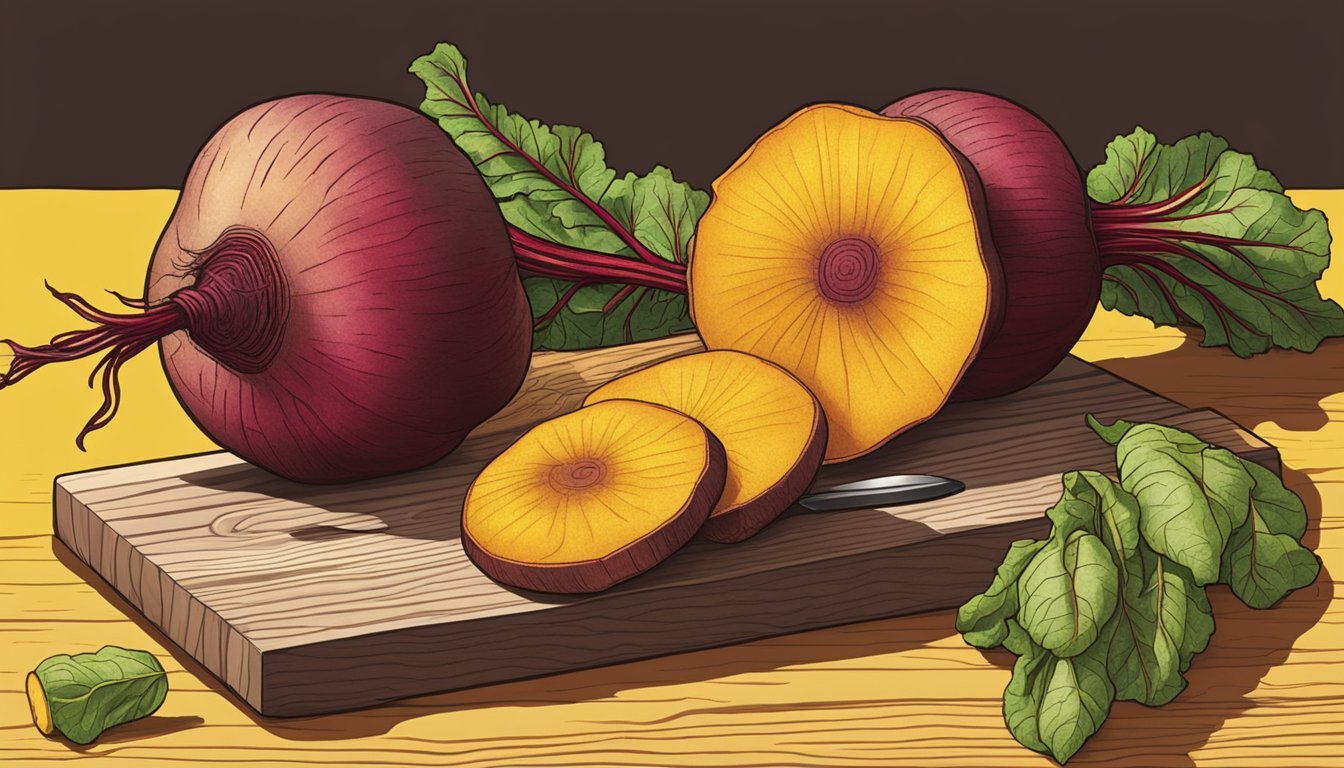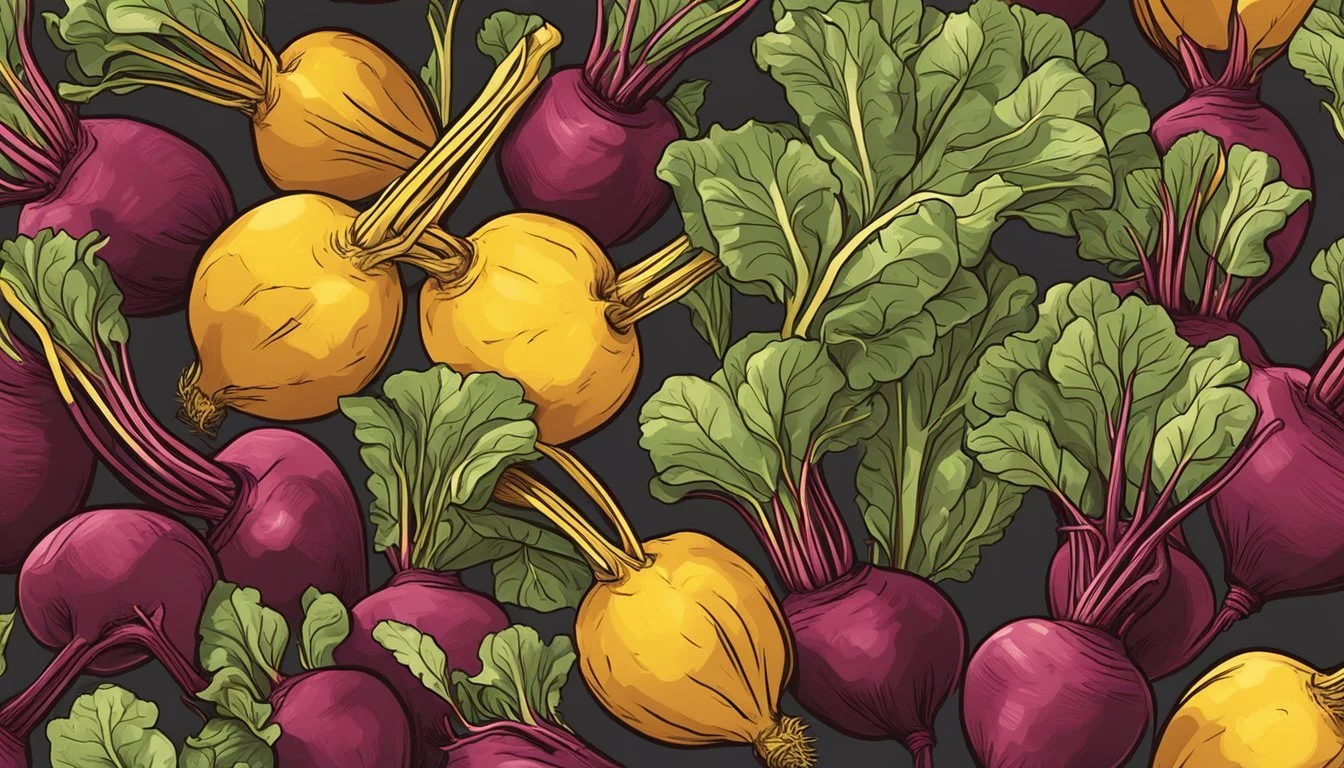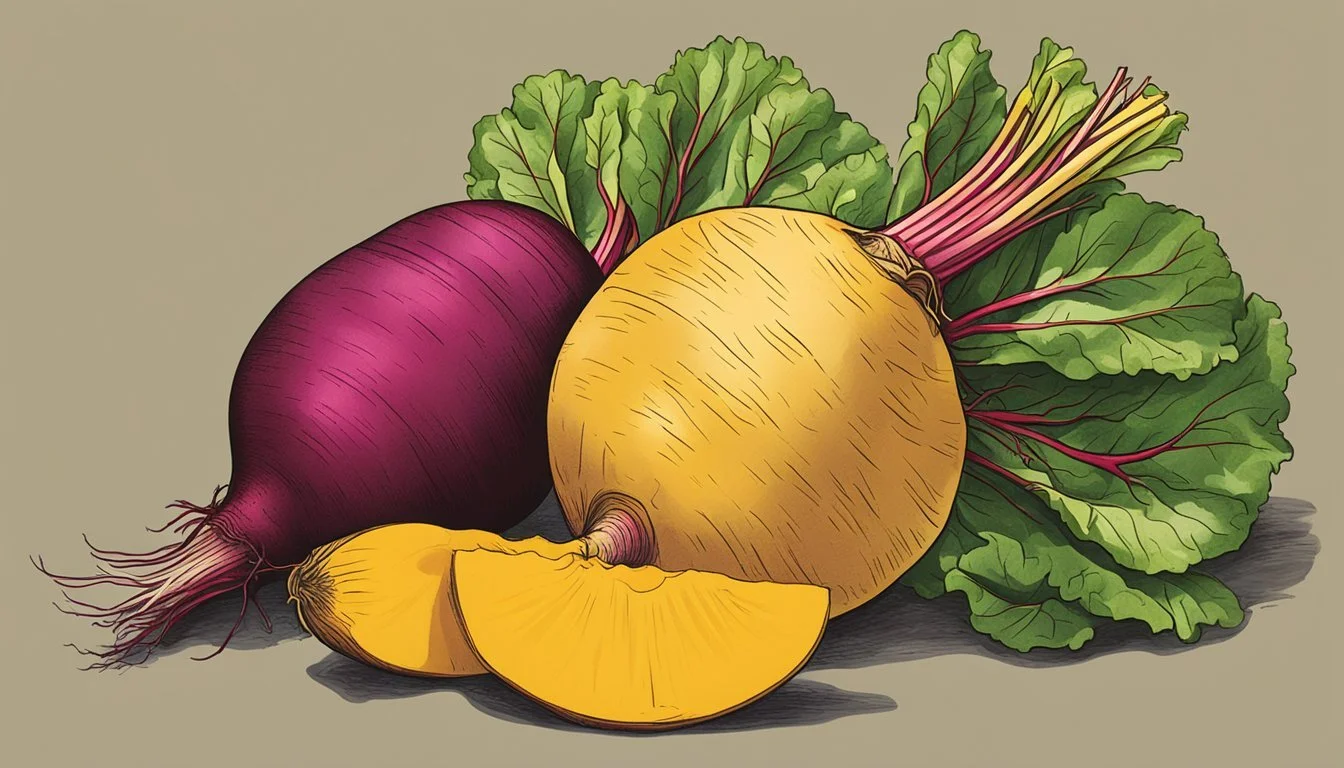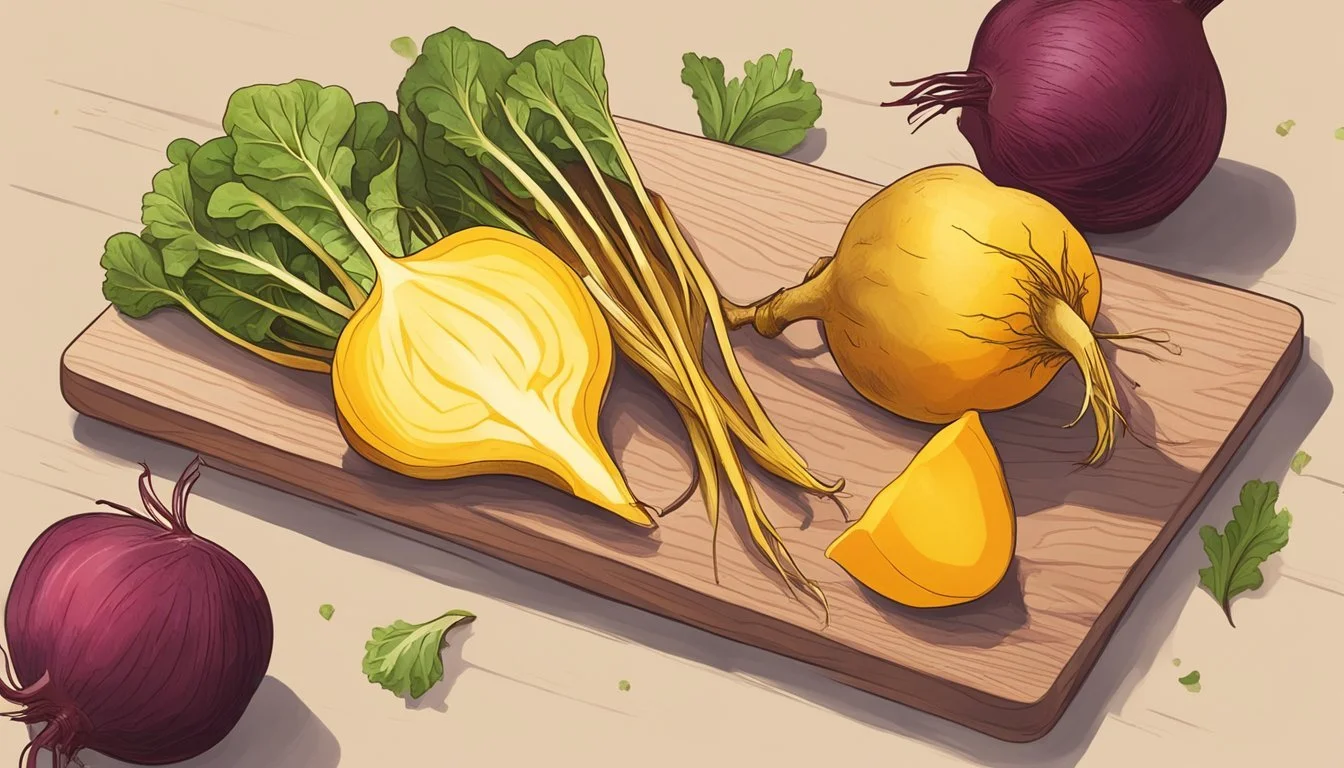How to Substitute Yellow Beets for Red Beets
A Simple Guide
When cooking with beets, many recipes specify a particular color of this nutritious root vegetable, often red beets for their deep, vibrant hue and strong, earthy flavor. However, yellow beets, with their milder taste and vibrant golden color, offer an interesting and often sweeter alternative in many dishes. Understanding the differences and how to effectively substitute yellow beets for red can expand your culinary repertoire and introduce new flavors to traditional dishes.
While the two varieties share many nutritional benefits and a similar texture, the subtler taste of yellow beets can be preferable in salads, slaws, or dishes where a less earthy flavor is desired. They can be used interchangeably with red beets in most recipes, but it's important to consider the final color aesthetic of the dish, as yellow beets do lack the bold red color that might be integral to a recipe's visual appeal.
Substituting yellow for red beets can be done easily with a few considerations for cooking time and seasoning adjustments. Due to their milder flavor profile, yellow beets can absorb additional flavors more readily, making them a versatile ingredient in a variety of dishes ranging from savory roasts to sweet beet cakes. When substituting, one should also consider the visual impact, as the bright yellow can offer a lighter, more summery presentation on the plate.
Overview of Beets
Beets are a versatile root vegetable known for their earthy flavor and nutritional richness. This section provides an in-depth look at the different types of beets and their nutritional profiles.
Types of Beets
Beets come in various types, each with unique qualities. The two most common are:
Golden Beets: These have a yellow-gold hue and offer a sweeter taste with less of the earthy flavor that is characteristic of beets.
Red Beets: Known for their deep red color and intense earthy sweetness, red beets are the more traditional variety.
Other less common varieties include Chioggia, with its candy-striped interior, and white beets, which are milder in flavor.
Nutritional Profile
Beets are low in calories but high in valuable vitamins and minerals. Here is a brief overview of their nutritional benefits:
Fiber: Essential for digestive health.
Vitamins: Rich in folate (vitamin B9), essential for DNA synthesis and repair, and vitamin C, an antioxidant.
Minerals: Good source of minerals like iron, potassium, and manganese.
Calories: A serving of beets typically contains a low number of calories.
Antioxidants: Contains betalains, which have been noted for their antioxidant properties.
Nitrates: Naturally occurring nitrates in beets can improve blood flow and lower blood pressure.
Furthermore, the presence of magnesium and the relatively high levels of potassium contribute to the nutritional benefits of beets, supporting overall health and wellness.
Preparation Differences
When substituting yellow beets for red beets in recipes, it’s important to consider the differences in preparation techniques that can affect the outcome of your dish.
Peeling and Cutting
Yellow beets, similar to red beets, require peeling before being cut. However, yellow beets produce less staining, which makes them slightly easier to work with. The skin may be removed with a vegetable peeler. Once peeled, they can be chopped into desired sizes. For consistency in cooking, cutting the beets into uniform pieces is crucial.
Cut into uniform pieces for even cooking.
Cooking Methods
Different cooking methods can be applied to both red and yellow beets, but the outcome in terms of color and staining may vary.
Roasted: To roast beets, one can wrap them in aluminium foil with a drizzle of olive oil, salt, and pepper, cooking them in an oven preheated to 425°F. They should be turned occasionally to ensure even roasting.
Boiled/Sauteed: For boiling, place the peeled and cut beets in a pot of boiling water until tender. Sauteing involves cooking them with a little oil over moderate heat.
Steamed: Steaming beets preserve their nutrients and color. It requires placing the beets over boiling water in a steamer basket.
Slow Cooking: This method is suitable for both types of beets but may result in a milder flavor for yellow beets.
Red Beets: Tend to bleed their color when boiled or sauteed.
Yellow Beets: Less prone to staining during cooking, which may be preferred for maintaining the visual appeal of certain dishes.
Using these methods appropriately, one can successfully incorporate yellow beets into dishes typically made with red beets.
Taste and Texture Comparison
When substituting yellow beets for red beets, a cook may notice differences in taste, texture, and color which can affect the outcome of a dish. While they may be used interchangeably in many recipes, understanding these differences is crucial for achieving the desired flavor profile and presentation of a dish.
Earthy Flavor
Red beets are typically known for their strong earthy flavor which is more pronounced than in yellow beets. This characteristic taste, often described as robust, stems from the geosmin compounds found within them. Golden yellow beets possess an earthy flavor as well, but it is milder and less overpowering, making them suitable for those who might find the taste of red beets too intense.
Sweetness and Color
In terms of sweetness, golden beets tend to be sweeter than their red counterparts, with a subtlety that compliments other ingredients without overshadowing them. This slight sweetness can enhance a dish by adding a new dimension of flavor. As for color, yellow beets offer a vibrant golden hue that can brighten a dish visually, though they lack the deep red color that red beets are famous for, which can bleed into other components of a meal, affecting the overall presentation. The texture of golden beets is also less crunchy when raw and tends to be softer when cooked, providing a different mouthfeel compared to red beets.
Usage in Recipes
When substituting yellow beets for red beets in recipes, chefs should consider the slight difference in taste and color presentation. Yellow beets tend to be a bit sweeter and less earthy than their red counterparts, which may subtly alter the dish's flavor profile.
Roasted Beet Recipes
For roasted beet recipes, yellow beets can be used interchangeably with red beets. They should be cut into uniform pieces to ensure even roasting. Here is how they fit into some specific dishes:
Salads: Roasted yellow beets add a vibrant, golden hue and a sweet taste.
Sides: Serve them as a side dish where their color can be a visual highlight.
Roasting temperature and time remains consistent with red beets, typically at 400°F (204°C) for 30-40 minutes.
Raw Preparations
Yellow beets are excellent in raw preparations, such as salads and slaws, where their color can be particularly appealing. They do not bleed as red beets do, so they keep the rest of the dish cleaner in presentation.
Salads: Slice or grate raw yellow beets for a crunchy, colorful addition.
Juices and Smoothies: Their milder taste and less intense color work well when juiced or blended.
Beet-Infused Specialties
Yellow beets can be utilized in beet-infused specialties where the golden color might be preferred:
Soups: Blend into a vibrant, yellow beet soup for a twist on the classic borscht.
Smoothies: For a milder beet flavor, use yellow beets in place of red in any beet-infused smoothie recipe.
Mashed beets: When mashed, they provide a buttery hue, making them an aesthetically pleasing side dish.
In all cases, cooking times and methods for yellow beets mirror those of red beets, ensuring they can easily be used as a substitute in existing recipes.
Substituting Yellow for Red Beets
When substituting yellow beets for red ones, it is vital to understand that while the nutritional profile remains consistent—both varietals are healthy and nutritious—there will be noticeable differences in color and a subtle variation in sweetness level.
Salad Applications
In salads, yellow beets offer a milder sweetness and a less earthy flavor than their red counterparts. They can be used raw, roasted, or pickled and still maintain their vibrant hue which delivers a visual appeal, albeit lighter and more golden than the intense red of traditional beets. For a direct substitute in raw preparations:
Color: Expect a bright yellow to golden color rather than the deep red.
Flavor: Yellow beets are usually sweeter and less earthy.
Texture: Retains a firm, crisp texture when sliced thinly or shredded.
Cooked Dishes Enhancement
When cooked, yellow beets play well in dishes where a softer color palette is preferred, or where the strong color of red beets might be visually intrusive. Their inherent sweetness elevates dishes with a subtle complexity without overwhelming other flavors. Ideal methods of cooking include:
Roasting: Enhances their natural sweetness.
Boiling: Can be diced or sliced for soups and stews.
Steaming: Preserves the nutritional quality while softening the texture.
The versatility of yellow beets as a substitute shines through in both salad and cooked applications, making them a nutritious and visually appealing addition to meals.
Other Vegetable Substitutes
In seeking alternatives to yellow beets, one may consider a variety of vegetables that can mimic the texture or color in both raw and cooked dishes.
Substitutes in Salads
Carrots: They offer a similar crunch and sweetness to yellow beets and contribute a vibrant color to salads.
Radishes: These have a peppery kick and crisp texture, making them fitting for a raw dish.
Red cabbage: Its crunchy texture and the color can brighten up salads, closely imitating the aesthetic appeal of beets.
Substitutes in Cooked Recipes
Sweet potatoes: Provide a creamy texture and sweet flavor, suitable for roasting and mashing.
Turnips: An ideal substitute in stews or roasted dishes, turnips contribute a slightly pungent flavor.
Celeriac: Known for its subtle, earthy taste, celeriac can replace beets when diced and roasted or mashed.
Parsnips: Their sweetness intensifies when cooked, which works well in recipes calling for the natural sugars of beets.
Seasonal Availability and Storing Tips
When selecting yellow beets, it's important to understand their seasonal availability and the best methods for storage to maintain their quality and flavor.
Fresh Availability
Yellow beets, like their red counterparts, typically reach peak availability from late spring through fall. Availability can vary based on local climate and farming practices. They can be enjoyed out of season, though they may be less commonly found during off-peak times.
Storage Solutions
For fresh beets:
Unwashed: Store in a plastic bag in the refrigerator's vegetable drawer to last up to three weeks.
Trimmed: Keep the greens and stems trimmed to about an inch to prolong freshness.
For cooked beets:
Refrigeration: Store in an airtight container and consume within 3 to 4 days.
For canned beets:
Shelf life: Can be kept for extended periods, providing a convenient and healthy snack option when fresh beets are out of season.
Storage: Keep in a cool, dry place away from sunlight. Once opened, refrigerate and use within a few days for best quality.
Advantages of Yellow Beets
Yellow beets, also known as golden beets, are a valuable addition to any diet, offering distinct health benefits and culinary advantages. They present a unique and often sought-after quality in both the kitchen and nutrition planning.
Nutrition and Health
Golden beets are rich in essential nutrients that contribute to overall health. They are particularly known for their fiber content, which aids in digestion and helps to maintain heart health. The fiber in yellow beets can also play a role in regulating cholesterol levels. Additionally, these vibrant vegetables are a source of important vitamins and minerals, including vitamin C, potassium, and iron.
Sweetness: Yellow beets tend to be naturally sweeter than their red counterparts, which may be more palatable for some, especially when eaten raw.
Earthy flavor: They have a less earthy and more mild taste compared to red beets, which can be advantageous in certain recipes.
Culinary Benefits
From a culinary standpoint, yellow beets offer several benefits that make them a versatile ingredient in the kitchen.
Color Preservation: Golden beets retain their bright, appealing color when cooked, which can enhance the visual presentation of a dish.
Flavor Pairing: Their natural sweetness pairs well with a variety of flavors, from tangy citrus to robust herbs.
The subtle flavor of yellow beets does not overpower other ingredients, making them an excellent choice for both savory and sweet dishes. They can be roasted, boiled, or even enjoyed raw, offering chefs and home cooks a wide range of preparation options.
Adapting to Taste Preferences
When substituting yellow beets for red beets, it's essential to understand the flavor differences and how to adjust the seasonings accordingly. Yellow beets have a sweeter taste, while red beets are more robust and earthy.
Adjusting Sweetness
Yellow beets boast a natural sweetness that may not require additional sugars. To maintain the inherent flavor of red beets, one might consider a slight reduction in sweetening agents. Conversely, if a recipe with red beets calls for a sweet complement like honey or sugar, the cook may omit or reduce this when using yellow beets.
Reduction tips for sweeteners (if using yellow beets):
Honey or Sugar: Start with half the suggested amount.
Maple Syrup: Reduce by one-third to gauge its influence on the overall taste.
Balancing Earthiness
The earthy tones in red beets are part of their unique profile, which yellow beets lack to some extent. To reconcile this difference:
One can introduce savory elements such as sage or a touch of Dijon mustard to enhance the earthiness of yellow beets.
To balance the flavor, it is often helpful to season with salt and pepper judiciously.
For an undertone of spiciness, consider adding a pinch of pepper.
One might also use olive oil in the roasting process to bring out more complex flavors from the yellow beets.
The goal is to build a depth of flavor that approximates the experience of red beets while embracing the characteristics of yellow beets.
Beet-Based Dish Inspirations
When substituting yellow beets for red in recipes, chefs can retain the dish's original charm while introducing a milder, slightly sweeter note. From hearty comfort foods to light, refreshing dishes, the versatility of beets, whether roasted or pickled, shines through.
Comfort Food Ideas
Beetroot Risotto: A classic Italian dish gets an earthy twist when golden beets are roasted to caramelized perfection, then folded into creamy arborio rice. The natural sweetness of yellow beets balances the savory depth of the risotto.
Ingredients: Arborio rice, roasted yellow beets, vegetable stock, parmesan, onion, garlic.
Key Steps: Roast the beets until tender. In a separate pan, sauté onion and garlic, add rice, then slowly incorporate stock until creamy.
Beetroot and Goat Cheese Tart: This savory pastry is ideal for a comforting meal, with sweet roasted yellow beets complemented by tangy goat cheese, atop a flaky crust.
Ingredients: Puff pastry, roasted yellow beets, goat cheese, thyme, eggs.
Key Steps: Line tart pan with pastry, layer with beets and cheese, bake until golden.
Light and Refreshing Options
Beet and Citrus Salad: They can craft a vibrant salad by pairing thinly sliced yellow beets with an array of citrus fruits, adding a light vinaigrette for a refreshing bite.
Ingredients: Yellow beets, mixed citrus (oranges, grapefruits), mixed greens, vinaigrette.
Key Steps: Roast and slice beets, segment citrus, toss with greens and dressing.
Pickled Beets and Celery Root Remoulade: A play on classic pickled beets, this version uses yellow beets for a subtle twist, and when combined with julienned celery root, it creates a crunchy, tangy remoulade.
Ingredients: Yellow beets, celery root, pickling brine (vinegar, sugar, spices), mayonnaise, mustard.
Key Steps: Pickle sliced beets, julienne celery root, mix with dressing components.









